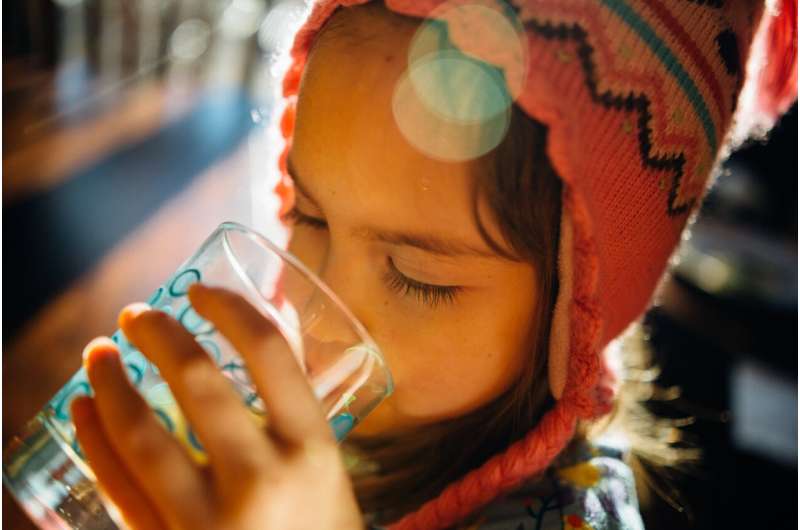This article has been reviewed according to Science X's editorial process and policies. Editors have highlighted the following attributes while ensuring the content's credibility:
fact-checked
peer-reviewed publication
trusted source
proofread
Difficulty swallowing, allergies in children and young adults: It could be eosinophilic esophagitis

Children and young adults with allergies or eczema who have difficulty swallowing may have eosinophilic esophagitis. A review published in CMAJ (Canadian Medical Association Journal) provides guidance on how to diagnose and manage this chronic inflammatory disease.
In people with eosinophilic esophagitis, the esophageal lining is inflamed, which can cause injury and narrowing of the throat. Although it can affect anyone, the risk is higher in children aged 5–14 years and adults aged 20–45 years, and it is 3–4 times more common in males than females.
Incidence is rising, and rates are highest in North America and Europe. It is unclear if the rise in detection is because of more awareness, or if it reflects a true increase of disease in our communities.
Key points:
- Difficulty swallowing and food getting stuck in the esophagus are the most common symptoms in adolescents and adults, whereas children are more likely to have abdominal pain, heartburn/reflux, reduced appetite, chronic cough, vomiting, or failure to thrive.
- Most patients (75%) have at least one atopic (allergic) condition, such as food or environmental allergies, asthma, or eczema.
- Diagnosis is based on patient history and 4–6 esophageal biopsies taken from at least two locations during a gastroscopy/endoscopy.
- Management in the form of diet, drugs, and/or esophageal dilation—known as the "3 Ds"—is recommended to prevent long-term complications.
It is important to distinguish between eosinophilic esophagitis and eating disorders in adults, which can appear similar.
"Eating disorders may be difficult to differentiate from eosinophilic esophagitis since restrictive eating behaviors, including food aversions, anxiety around mealtimes and chewing behaviors, are a potential feature of both conditions," write Drs. Milli Gupta and Michelle Grinman, Cumming School of Medicine, University of Calgary, Calgary, Alberta.
"A detailed dietary history is essential to decipher which types of foods a patient avoids and why. Patients with eosinophilic esophagitis may avoid meat and bread because of previous choking episodes, while patients with eating disorders may do so because of caloric content."
The authors recommend shared decision-making between the physician and patient to mitigate the impact of both the disease and its treatment on quality of life. They suggest a multi-faceted approach encompassing dietary changes and medications, depending on severity of disease and risk of future complications.
Patients at high risk of food impaction may need esophageal dilatation, and consultations with a gastroenterologist and dietitian are recommended to personalize care.
The authors call for more research to better understand the disease as well as optimal ways to diagnose, treat, and manage eosinophilic esophagitis.
More information: Diagnosis and management of eosinophilic esophagitis, Canadian Medical Association Journal (2024). DOI: 10.1503/cmaj.230378


















